Ball Reviews
Review: NXT Tour and NXT Tour S Golf Balls

Pros: Both the NXT Tour and NXT Tour S provide tour-level short game performance with low driver spin. New softer compression cores makes these balls even softer than previous models.
Cons: High-optic yellow is only available in the NXT Tour S and not in the NXT Tour.
Bottom Line: The NXT Tour and NXT Tour S are noticeably softer than their previous models without sacrificing distance or spin around the greens. The NXT Tour manages to generate the same spin on wedge shots and less spin off the driver than the more expensive Pro V1. The high-optic yellow color available in the NXT Tour S is an interesting alternative to traditional white balls, and its extremely easy to see in a variety of conditions. If you want to play a tour-level ball without paying tour ball prices, the NXT Tour and NXT Tour S should be at the top of your list of balls to test.
Overview
The NXT Tour and NXT Tour S, while popular, have been left standing in the very long and wide shadow of their more popular brothers, the Pro V1 and Pro V1X. But like most younger siblings, these balls are eager to step out of the shadow and prove they have what it takes to make it into the bags of golfers of any skill level. Over the past two years, 40,000 golfers from around the world participated in Titleist’s white-box testing and validation program and their findings directly impacted the development of the 2014 NXT Tour and NXT Tour S, as well as the Velocity and DT SoLo, which we will review in the future.
The 2014 NXT Tour and NXT Tour S have both been updated with reengineered softer compression cores and covers, making these balls even softer than previous models while maintaining distance and exceptional short game performance. The thin, Fusablend cover aides in the soft feel, but it also provides a much more durable NXT Tour and NXT Tour S than previous models. As Titleist claims, both balls are exceeded in performance only by the Pro V1 and Pro V1x. As you’ll see in this review, I agree.
The NXT Tour is available only in the traditional white color. The NXT Tour S is available in both white and high-optic yellow, which many golfers will find appealing, even those who have not traditionally played a yellow ball. The NXT Tour and NXT Tour S are available now and carry a minimum advertised price of $33.39.
Performance
After reading about the enhancements to this year’s models, I was eager to test the new balls out to see if they really do perform similarly to the higher-priced Pro V1 and Pro V1X. I was also curious to see the differences in the two balls. Looking at the chart provided by Titleist that compares the two models, only two points separate the two balls: feel and driver distance. According to Titleist, the NXT Tour is the longer ball while the NXT Tour S has a softer feel.
To get a true sense of performance, I tested both balls on a launch monitor and on the course. To get the data, I hit both balls on a launch monitor with a 60-degree wedge, 6 iron and a driver. My methodology and testing location stayed the same as in the Pro V1 and Pro V1X review. My swing speed with a driver is around 105 mph and I tried to maintain a normal swing throughout testing. Following Titleist’s fitting process, we’ll start near the green and work back.
60-degree Wedge Shots
I’ll admit, going into the test with the wedge I was expecting to see spin rates that could be considered close to a tour-ball level, but still about 500-to-1000 rpm less than the Pro V1 and Pro V1x. I started with the NXT Tour and after the second shot came in north of 11,000 rpm, I started to get excited. The rest of the testing continued to produce excellent spin numbers with both balls. The NXT Tour and NXT Tour S performed almost identically with full shots from the 60-degree wedge. Ball speed, launch angle and peak height were virtually the same. Even the spin numbers were within about 100 rpm of each other, and on the course they generate some serious stopping power.
Where it gets really interesting is when we compare the performance to the Pro V1 and Pro V1x. The NXT Tour actually generated more spin with the wedge than the Pro V1 and only 255 rpm lower, on average, than the Pro V1x. Both balls launched higher and reached a peak height 4 yards higher than the Pro V1X. For me, I’d rather see my wedges fly a little lower, which makes it easier to control them in the wind. That said, having to control the top end of the flight with a wedge is doable and could be a good trade-off for some golfers looking for green-grabbing spin from a non-tour ball.
6 Iron
The variances between the two balls continued to be very slim during 6 iron testing. The NXT Tour S generated slightly more ball speed, a lower launch and more spin. But all the numbers were so similar to each other that I can hardly consider them different. Even comparing them to the Pro V1 and Pro V1x proved to be an exercise in evaluating half degree differences in launch to find a difference. As we’ll see with the driver, the NXT Tour and NXT Tour S both generated less ball speed than the Pro V1 and Pro V1x, but even the loss in ball speed wasn’t dramatic.
At this point in testing, I started to really believe that making a decision about which ball fit my game better would come down to feel alone.
Driver
The driver is the other area of the game where these two balls could start to differentiate themselves from each other and from the rest of the 2014 Titleist lineup. My expectation going into the test is that both balls would generate less spin off the driver, which for me is a very good thing. I already generate a little too much spin off the driver, so I need a ball that generates less spin.
The NXT Tour and NXT Tour S generated similar amounts of spin off the driver and both balls delivered less spin than the Pro V1X. The NXT Tour actually recorded spin rates almost 400 rpm lower than the Pro V1. While both balls reached the same peak height and the same descent angle, the NXT Tour S actually launched almost a half degree lower than the NXT Tour. Interestingly, the descent angle of both the NXT Tour and NXT Tour S was 3 degrees lower than the Pro V1 and Pro V1x, which resulted in slightly more rollout, but very similar overall distance. As claimed, the NXT Tour generated about 4 yards more distance than the NXT Tour S, and turned out to be the longest of all the balls in the 2014 lineup.
On-Course Testing
Launch monitor data confirmed and backed up most of Titleist’s claims about the expected performance of both golf balls. Just as I did with the Pro V1 and Pro V1x testing, I completed the on-course testing during the same week at River Strand Golf & Country Club.
Since I don’t normally play with a yellow golf ball, I was eager to try the NXT Tour S in high-optic yellow. The first shot was a hybrid off the tee and I couldn’t have hit the shot any better. I’m one of those golfers who struggle to see white balls on the course in almost any condition, and the first thing I noticed with the yellow NXT Tour S was that I could see it much further downrange and I could pick it up in the fairway better as well. Even standing over putts, the ball seemed almost bigger to me, which pumped up my confidence.
Off the tee, I could see that both the NXT Tour and NXT Tour S had a similar launch and flight. It was windy in Florida while I was testing and the NXT Tour balls, and they cut through the wind with a piercing ball flight that felt very controlled. While I didn’t think it looked much lower than the Pro V1 or Pro V1X, the rollout and overall yardage gains matched the launch monitor data. I didn’t find either ball to be more or less difficult to control, and I could work the balls any way I wanted.
Approach shots seemed to stick to the green and end up very close to their pitch mark. I wasn’t able to back any shot up until I was within pitching wedge distance, but I was able to fire at pins with even long irons with the confidence both balls would grip the green and keep me close.
After seeing the launch monitor data, I had the confidence to give some low, spinning wedge shots a try with the NXT Tour and NXT Tour S. I actually smiled after the first one hit and checked perfectly. Had I not seen the launch monitor data prior to playing, I likely wouldn’t have been as aggressive, but I’m glad I did. I felt very confident that I could play these balls just as I would play a tour ball. I didn’t have to back off or adjust my yardages with longer irons to accommodate more rollout.
Half Wedge Shots
Even though I had a chance to hit a variety of half wedge shots while on the course, I wanted to give these guys a more thorough test. During the half wedge testing, I noticed that both balls performed extremely well and very similar to one another. They had a tendency to get a little bit higher than the Pro V1 and Pro V1X, but not in a bad way. In fact, I could use that to my advantage and play softer, higher shots into the green as well. The low, spinning wedge shots I like to play seemed to jump off the face, hit the green, bounce once and stop dead.
Around the Green
Just like the other balls in the lineup, within 40 yards the performance of the two balls were very similar to each other. Just like the testing of the Pro V1 and Pro V1X, I hit a variety of different chip shots as I would on the course. I hit bump-and-run shots with a 9 iron from off the green, which reacted with a skip and a rollout. With a more lofted 60-degree wedge, I was able to hit a variety of shots from quick-spinning low chips that hit once, checked up and stopped, to open face shots with spin and some more lofted, softer shots.
Spin out of the bunker, again just like the Pro V1 and Pro V1x, was very nice. I didn’t feel like I got the exact amount of spin as I would out of the tour balls, but I was able to throw many shots all the way to the hole and get them to check up.
Both balls felt great around the green and the NXT Tour S definitely felt softer, which I liked.
Putting
I’m very impressed with both balls on the putting surface. They rolled straight and true and came off the putter face with gusto. It is the feel of the NXT Tour S that really excites me. Shots struck pure felt almost as good to me as a Pro V1. Not exactly like a Pro V1, but really close.
Whether it was an optical illusion or not I don’t know, but looking down and striking a flush putt with the yellow NXT Tour S felt spongy and almost heavy. It was heavy in a good way, which gave me the courage to send the putter through the ball and drop putts off the back of the cup.
For me, the feel of the NXT Tour S was much softer and therefore better, but both balls felt great on the green.
Looks and Feel
If you read the review of the Pro V1 and Pro V1X, you know I’m in love with the Titleist script. When I opened the package of NXT Tour balls and held one for the first time I was slightly disappointed. I do not expect these balls to have the same classic look and feel as a Pro V1, but my instant impression was that they felt much harder, more slippery and that even the script had a slightly thicker and less crisp appearance. It was the first time I was reminded that these balls are not quite tour-level. Like so much in this review, we’re talking about minute but important differences.
Contrasting my initial impression of the NXT Tour, when I picked up the NXT Tour S in high optic yellow, I was much happier. I’m not a yellow ball player, but the pearlized shimmer of the yellow caught my eye. The Titleist script was crisper and matched the Pro V1 and Pro V1X, and I was left with the overall impression that the NXT Tour S was going to be the better ball.
Even though feel is very subjective with golf balls, I felt the NXT Tour S had a noticeably softer feel with every club from driver to putter. It’s not as soft as a Pro V1, but the feel and even the sound off well struck shots was extremely close. I would suggest hitting a variety of shots with both balls so you can be the judge.
Durability
All my testing, both on the launch monitor and on the course, was completed using only three of each type of ball and both of these balls held up extremely well. Both the NXT Tour and NXT Tour S have the same cover, so they displayed similar wear at the end of testing. These are extremely durable golf balls, especially given how much spin they can generate. Yes you can scuff them up, but looking at the six balls I tested with everything from hard, spinning wedge shots to drivers, there are very few scratches and marks.
The high optic yellow of the NXT Tour S actually hides scratches a little better than the white version of both balls. I will likely put all six balls back in the bag and feel very comfortable pulling any of them out to start a round.
Bottom Line
The 2014 NXT Tour and NXT Tour S golf balls are designed to give golfers low spin off the driver but high, shot-making spin on approach shots. Quite simply, these balls deliver in a big way. The spin generated by both balls is outstanding for their category and remarkable how close they come to matching the Pro V1 and Pro V1X, all at a price point around $30.
For any golfer looking to get the performance of a tour ball without paying tour ball prices, the NXT Tour and NXT Tour S should be at the top of the list of balls to try.
NXT Tour
[wrx_buy_now oemlink=”http://www.titleist.com/golf-balls/NXT-Tour.aspx” oemtext=”Learn more from Titleist” amazonlink=”http://www.amazon.com/gp/product/B00I1P3ACG/ref=as_li_qf_sp_asin_il_tl?ie=UTF8&camp=1789&creative=9325&creativeASIN=B00I1P3ACG&linkCode=as2&tag=golfwrxcom-20&linkId=BNA3JZHO3EFDN72Q”]
NXT Tour S
[wrx_buy_now oemlink=”http://www.titleist.com/golf-balls/NXT-Tour.aspx” oemtext=”Learn more from Titleist” amazonlink=”http://www.amazon.com/gp/product/B00I1OVLP0/ref=as_li_qf_sp_asin_il_tl?ie=UTF8&camp=1789&creative=9325&creativeASIN=B00I1OVLP0&linkCode=as2&tag=golfwrxcom-20&linkId=DTXFBWEH27DOKWAQ”]
- LIKE335
- LEGIT36
- WOW17
- LOL17
- IDHT7
- FLOP5
- OB5
- SHANK16
Ball Reviews
Is the Future of Golf Balls Lower Spin?
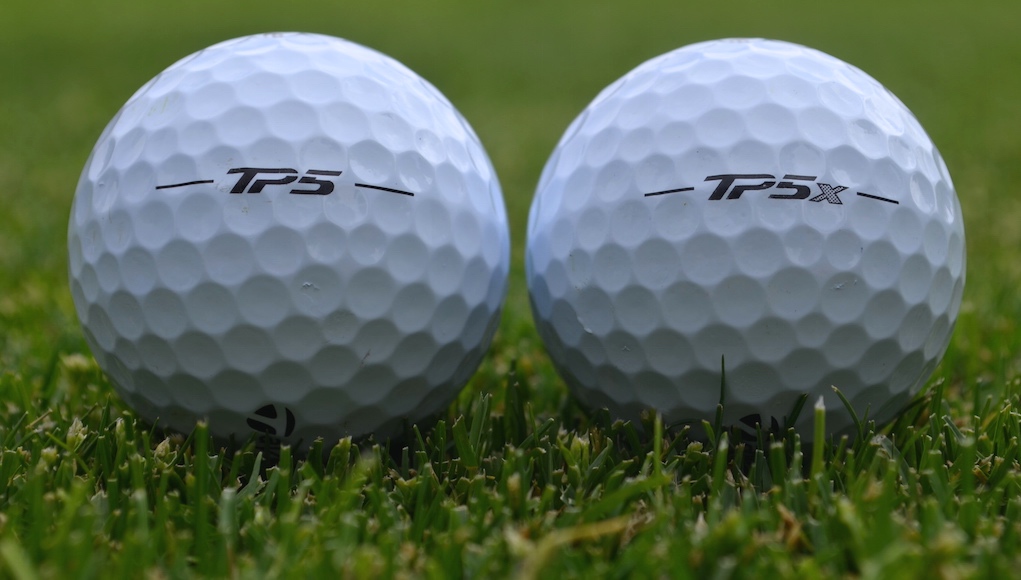
For years now, TaylorMade has been preaching lower spin to create more distance, especially in its drivers. Its original SLDR driver was actually so low spinning that TaylorMade encouraged golfers to try higher-lofted club heads, or to “loft up,” so golf balls wouldn’t dive out of the air. Now, when you look around at the popular drivers in the industry, most of them are designed to lower spin. TaylorMade was ahead of the curve.
With its new TP5 and TP5x golf balls, TaylorMade is pushing a similar initiative: lower spin on all full shots.
“This ball is different. You can make the argument this is too hot a golf ball for people who don’t spin it (enough). But that’s not the large percentage of golfers.”
For driver shots, it’s easy to understand the benefit of lower spin as long as the golfer launches it high enough. Low spin plus high launch equals more distance; that’s just a math equation. But with golf balls, as opposed to drivers, their jobs are also to get close to the hole, not just go as far and straight possible. With that in mind, is lower spin necessarily beneficial on ALL full shots, including the irons?
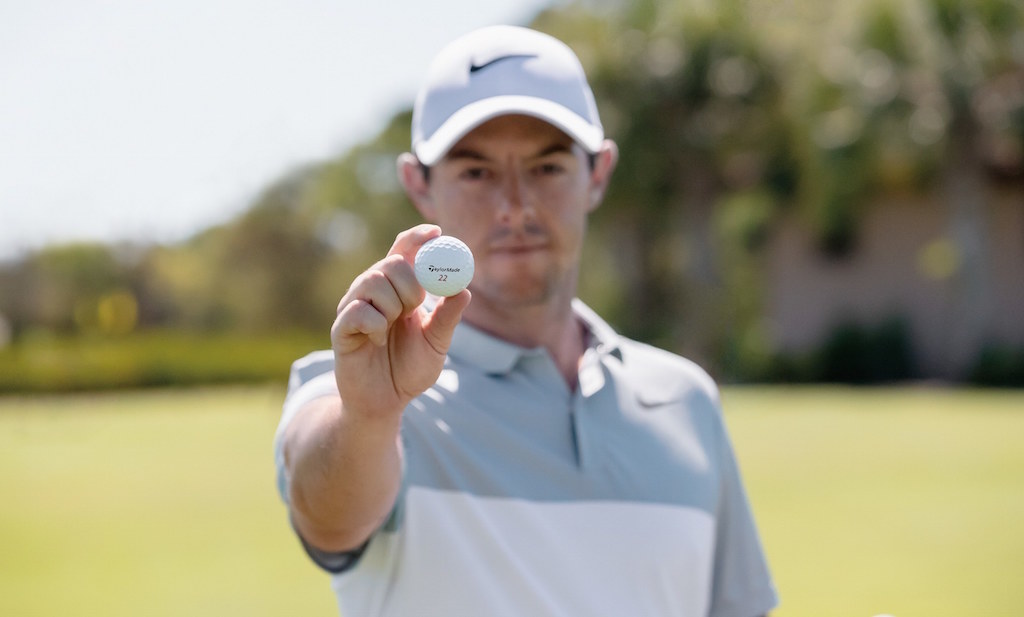
For Jon Rahm and Rory McIlroy, who both switched to TaylorMade TP5x golf ball this season — the lower-spinning and slightly firmer-feeling golf ball in the TP5 line — the answer is clearly “yes.” Rahm saw an 800 rpm drop in iron spin with a 4-iron compared to his Titleist’s Pro V1x golf ball and a 400 rpm drop in driver spin, according to TaylorMade. McIlroy saw up to 10 yards in extra distance with a 5-iron, and he picked up distance with the driver, as well. According to Eric Loper, Director of Golf Ball R&D at TaylorMade, McIlroy was hitting his 7 iron at 16.1 degrees of launch with 6350 rpm, and his 4 iron at 11.1 degrees of launch with 3800 rpm during his initial Trackman testing at The Bear’s Club.
“(With a 7 iron) you have to hit it about 7000 (rpm) or less, and he was hitting (his previous ball) up to 7500 (rpm),” Loper said. “That’s too high… (With the TaylorMade TP5x) he didn’t express any concern with (spin being too low). It was launching high, getting to its apex and landing soft.”
Hoyt McGarity, President of True Spec Golf, an internationally renowned custom club fitter with more than a dozen locations, has seen similar performance gains with TaylorMade’s TP5x golf ball through his personal testing and his testing with Tour players. He said he’s seeing 2-3 mph more ball speed compared to other golf balls. Just as importantly, he’s seeing those gains with a higher ball flight in what he called “straight up” club tests.
“Some of the Tour players — straight up, same loft, same lie, same golf club, same everything — they would launch this golf ball almost a degree higher, which is amazing,” McGarity said. “I was seeing almost 2-3 mph more ball speed for these Tour players, not that they need more distance, but I’m like, ‘You’re launching higher and it’s going further and it’s still coming in soft; it’s not coming in low and hot. It’s coming in high and still soft, so what’s the disadvantage?’ If you’re a low-ball hitter with low spin, you might have some issues. Your half shots might be tough to control the distance on it, that’s all.”
So while TaylorMade’s TP5 and TP5x golf balls are designed to go farther and with less spin on full shots, the company says their steeper landing angles will help them stop nearly as fast as higher-spinning balls. TaylorMade’s belief is based on the company’s scientific bounce-and-roll calculations, which factor in green conditions and landing characteristics. Yes, the lower spin of its golf balls in relation to competitors leads to minimally more roll out, but the amount is insignificant according to TaylorMade: an additional 1-1.5 feet. The company also points out that with a longer-flying golf ball, golfers will be hitting shorter clubs into greens, leading to more control. An 8 iron will yield greater stopping power and accuracy than a 7 iron, right?
Expert fitter Scott Felix of Felix Clubworks agrees with TaylorMade in theory. He said that as long as the golf ball is coming into a green at a steep enough angle, low spin is not a problem for approach shots.
“Most golfers spin the ball too much with their irons, costing them distance,” Felix said, “…but for golfers who already have a flat trajectory (with their irons), lowering spin won’t help them hold the green.”
McGarity added that about 80 percent of golfers who come to him for a fitting spin the ball too much, and for Tour players, the drop in spin won’t have a detrimental effect.
“Lets say the average spin on Tour is 6,000 (rpm with a 6 iron); it’s not like [TaylorMade’s TP5x golf ball is spinning] around 4,000 (rpm),” McGarity said. “If your average land angle is 49 degrees, they’re hitting these balls at say 5800 spin, which I think is great, and with a 50-degree land angle, so what’s the harm? It’s not like it’s coming in at 44 degrees; that’d be probably a one hop over the back and get into a little trouble.”
On the other hand, Felix notes that some Tour players simply want maximum control from a golf ball due to firmer fairway and green conditions, so lowering spin isn’t always the best option for them. But for average golfers, the distance gains will be beneficial.
“Most golfers aren’t playing in Tour conditions and will simply benefit from hitting the ball farther and having shorter irons into the green,” Felix said.
McGarity also warns golfers who already play low-spinning irons and drivers, and who spin the ball below 2,000 rpm with the driver, that the TP5 and TP5x golf balls may not be for them.
“This ball is different,” McGarity said. “You can make the argument this is too hot a golf ball for people who don’t spin it (enough). But that’s not that large percentage of golfers.”
After announcing an equipment contract with TaylorMade at The Players Championship, Rory McIlroy called TaylorMade’s TP5x golf ball the most important factor in his decision to sign with the company. With the new ball, he said he not only picked up distance, but consistency and control in the wind.
“I wasn’t really happy with the golf ball I was playing, and I needed to do something,” McIlroy said. “I felt like I struggled in the wind. So I sort of went back to the drawing board and tested for about 10 days pretty extensively after Augusta … I worked with the TaylorMade guys one day and started just on Trackman on the range and saw stuff with the golf ball … I thought, ‘Wow, this is what I need.’ This is exactly the thing that I’ve been struggling with.”
McGarity’s experiences confirmed McIlroy’s sentiments.
“I picked up a half club and I sit around and hit balls all the time on Trackman, so for me to pick up a half a club, it’s not the club it has to be the ball,” McGarity said. “And into the wind I can definitely see it’s more penetrating. I’m not a super high-spin player, so some shots I’ll hit the ball farther than I expected, but I’d rather have that issue than (to hit it) short.”
So there’s agreement that the ball spins less, goes farther and performs better in the wind with irons. But when fitting a golf ball, is iron play even the best place to start? Golf is about more than just iron shots, after all.
For Felix, a ball fitting begins by having a client hit “a bunch” of different golf balls on the putting green to narrow it down to a few based on feel preferences. Then he has the golfer take those golf balls to the chipping green and bunker. He then works back to 40-yard shots, narrowing down the options throughout the process based on feel and performance. After that, golfers will progress to the driver, and then to the irons.
“Usually you want to get a few balls you really like on and around the greens, then work backwards from there,” Felix said.
Initial testing for McIlroy started on the golf course, and not on Trackman, according to TaylorMade representatives. Once he became comfortable with performance and feel, he then took to Trackman to get dialed in with spin and match the golf ball to his equipment.
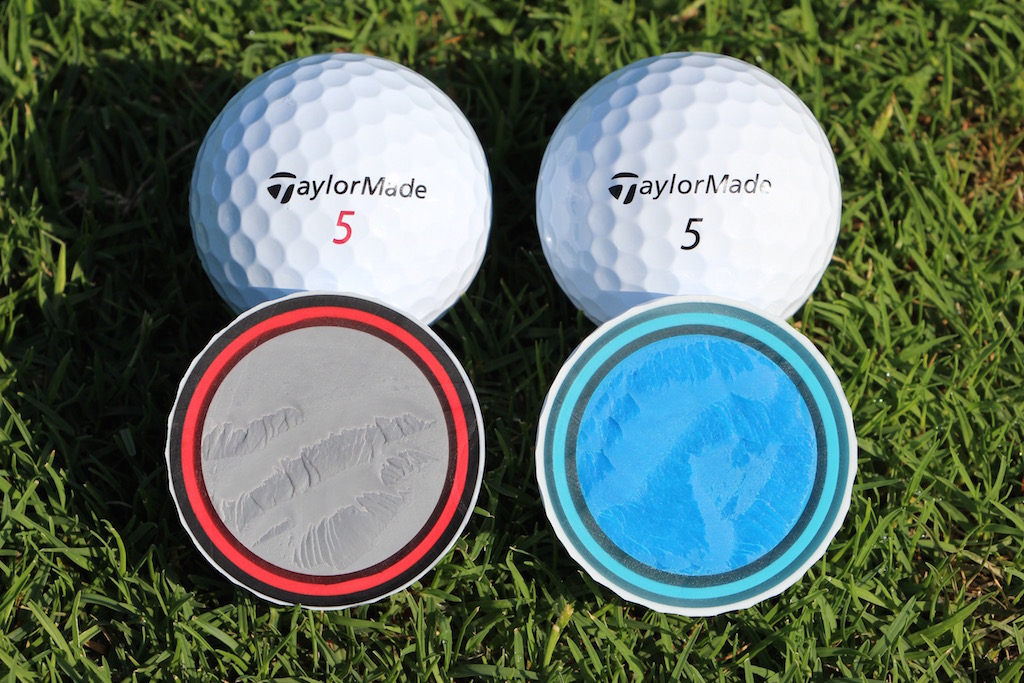
TaylorMade’s TP5x and TP5 golf ball (right), which has a slightly firmer feel.
Despite the low-spinning qualities of the golf balls on full shots, TaylorMade believes it’s giving up nothing to the competition in terms of short game performance. “There’s no golf ball that spins more around the greens,” a TaylorMade representative told me. That’s a legal way of saying no other golf ball company can prove, with confidence, that its golf ball spins more around the greens.
By producing extremely low spin on full shots, but without giving up performance and feel around the greens, TaylorMade says it’s providing the best qualities from each end of the spectrum with its TP5 and TP5x golf balls. But… how? TaylorMade engineers accomplished the feat by using larger and softer-compression cores. TaylorMade says the cores “activate” at 70 mph of swing speed inside of the five-piece constructions, which also have firm mantle layers and soft, urethane covers. The result is low spin on full shots, and high spin on shorter shots.
“It’s the real first golf ball (TaylorMade has) made that’s a game changer,” McGarity said.
TaylorMade does admit, however, that golfers may be sacrificing a bit of “workability” with the irons. That’s to say hitting hooks and slices with its golf balls becomes more difficult due to the lower spin. While the TP5 will offer a bit more of that control than the TP5x, it’s definitely something to keep in mind for those who prefer to play a Bubba Watson-style of golf.
Looking to the future
So does all of this mean that lower-spinning golf balls on full shots are the future of golf? Will we see golf equipment companies striving for drastically lower spin over the next few years?
TaylorMade representatives say they continue to chase lower spin in their prototyping, and until the golf ball is diving out of the air to the golfer’s detriment, lower spin is the future of golf balls. Obviously, TaylorMade is fully committed to a lower-spinning golf ball, and lower spin in general throughout its product lines.
For other premium golf ball manufacturers, bringing lower-spinning options to the market seems likely, given the performance benefits and Tour validation of TaylorMade’s new golf balls. But there’s a reason there are so many variations of golf balls on the market; every golfer is different. Some need more spin with the driver and want more workability with the irons, some want a super firm feel and others just want the cheapest ball possible.
Golfers should view TaylorMade’s TP5 and TP5x golf balls as options in the vast marketplace of golf balls, and perform thorough testing to figure out if this is the right line of golf balls for their game. And remember, lower spin and more distance will require recalibrating your iron distances, and possibly adjusting your equipment, so a mid-season switch is recommended only to those who are willing to put in the necessary work.
- LIKE311
- LEGIT52
- WOW18
- LOL8
- IDHT2
- FLOP6
- OB2
- SHANK79
Ball Reviews
Review: Callaway Chrome Soft X Golf Balls
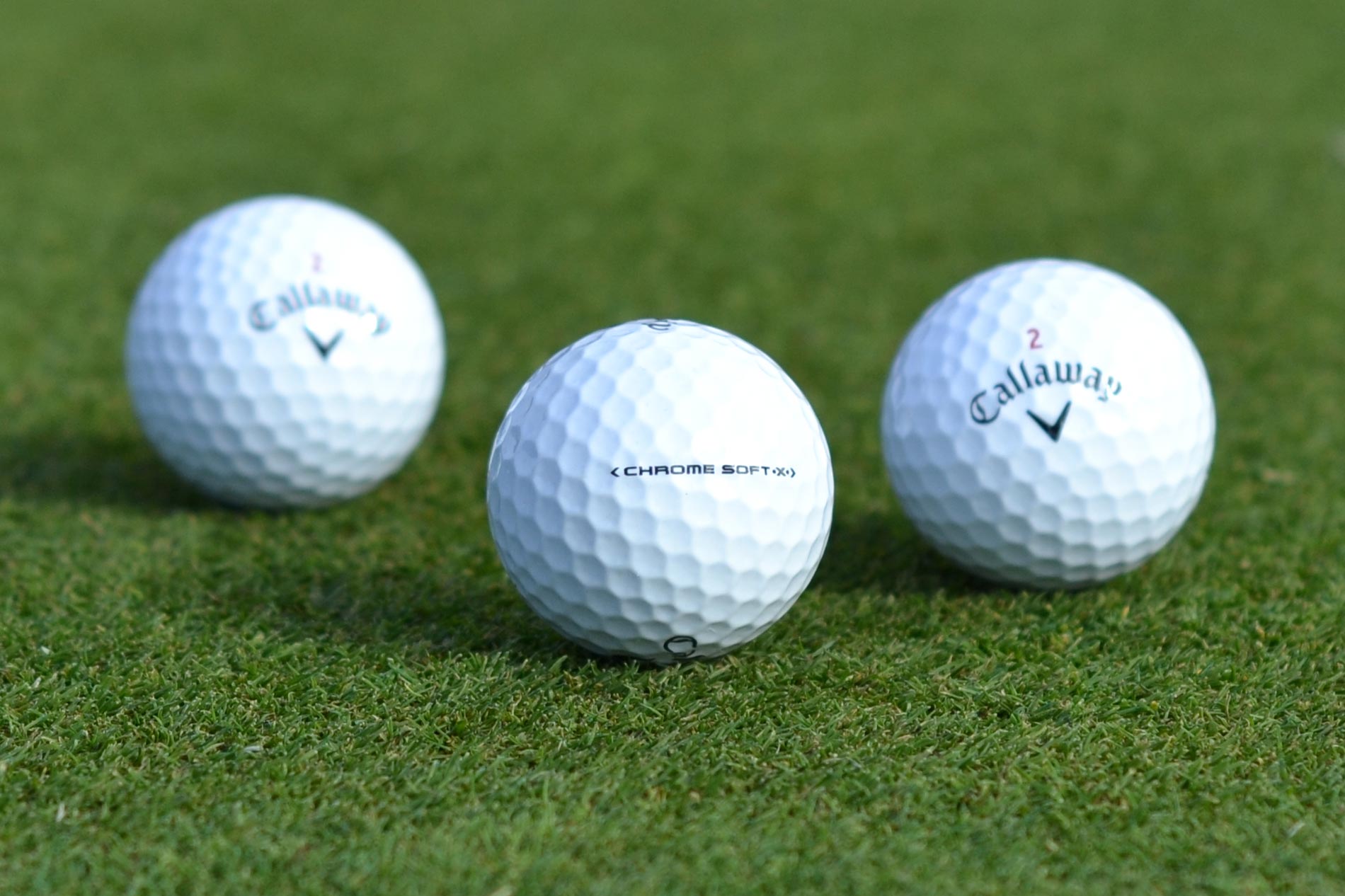
Pros: Incredibly soft feel like the Chrome Soft, but the Chrome Soft X increases spin through the bag to give better players more control.
Cons: Golfers who struggle with too much slice or hook won’t find it any easier to keep shots close to the target with the Chrome Soft X.
Who They’re For: Better players with higher swing speeds looking for a soft-feeling ball that checks up faster with iron shots than Chrome Soft.
The Review
Callaway says the Chrome Soft is “the ball that changed the ball,” and in many ways that’s true. It’s a tour-level golf ball with a softer feel, less spin through the bag and even a lower price point ($39.99) than some other tour balls in its category.
The Chrome Soft is Callaway’s best ball option for the vast majority of golfers (and received a 5-star rating by GolfWRX), but it isn’t for everyone. Callaway’s solution for them is its new Chrome Soft X golf ball.
What’s New in the Chrome Soft X
The original Chrome Soft golf ball, launched in 2015 had the very soft compression of 65. When Callaway released the 2016 version of Chrome Soft, it gave the ball a slightly higher compression (75), which improved its consistency on short-iron shots. The compression of its new Chrome Soft X is 90.
The reason for the higher compression has to do with the low-spin profile of the Chrome Soft, a blessing to most golfers as it helps their shots fly straighter and farther. It’s not ideal for some tour pros and better golfers, however. We’re talking about the kind of golfers who have great mechanics and strike shots consistently on the center of the club face. They often have a ball flight that is so dialed in that the lower-spinning performance of the Chrome Soft makes their shots harder to control. To address that small but important segment of the golfing population, Callaway created the higher-spinning Chrome Soft X.
Under the hood, Callaway used a slightly thinner urethane cover, increased the size and hardened the compression of the Dual SoftFast core, and enhanced the HEX Aerodynamics. As a result, the Chrome Soft X should generate more ball speed and spin through the entire bag.
Dave Bartels, Callaway’s Senior Director of Golf Ball R&D, says golfers will be able will notice the differences and have a clear favorite. “We expect that golfers who like the Chrome Soft X probably won’t like the Chrome Soft very much, and vice versa.”
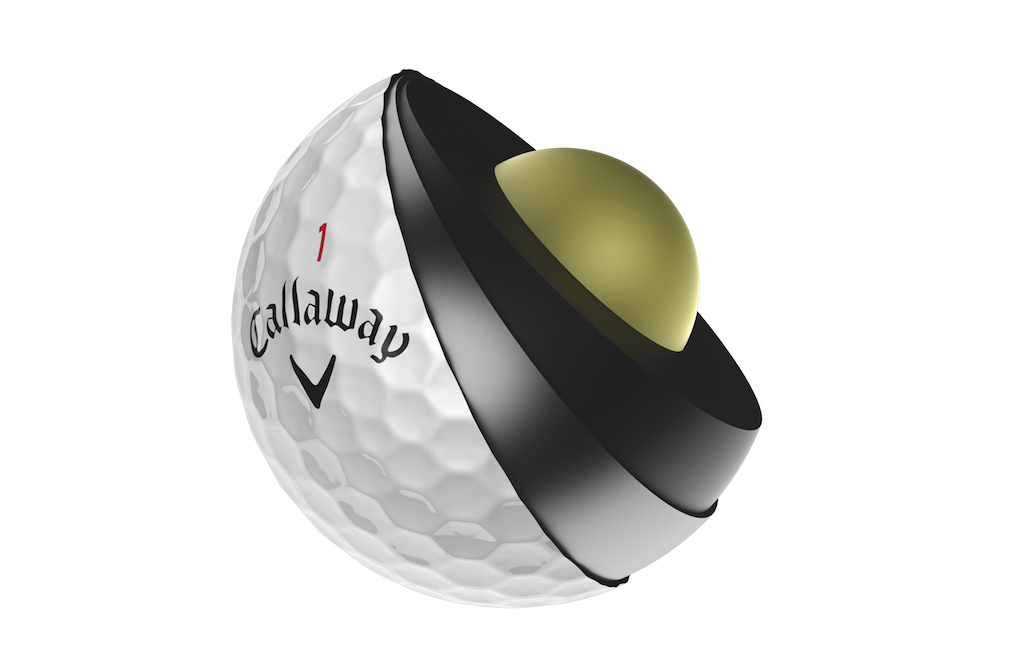 The Chrome Soft X ($39.99) will be in stores February 3 in White and Yellow.
The Chrome Soft X ($39.99) will be in stores February 3 in White and Yellow.
Performance
Since the Chrome Soft X is meant to be a complimentary golf ball to the Chrome Soft, we tested them head-to-head.
Compared to the Chrome Soft the Chrome Soft X should:
- Feel almost as soft as the Chrome Soft with the same durability.
- Generate more spin where better golfers need it.
- Generate faster ball speeds.
Like previous reviews, I tested these on the course and on a launch monitor with a 60-degree wedge, 6-iron and a driver. To allow me to re-hit each ball numerous times, I completed the testing indoors on a camera-based SkyTrak launch monitor. To keep the numbers as consistent as possible between the balls, I threw out and re-hit any shots that were not struck on the center and did not land within a designated target zone for each club (Wedge: +/- 3yards, 6 Iron: +/- 8 yards, Driver: Target width of 40 yards).
But I’m not a robot, so take that into account.
60-degree full wedge shots
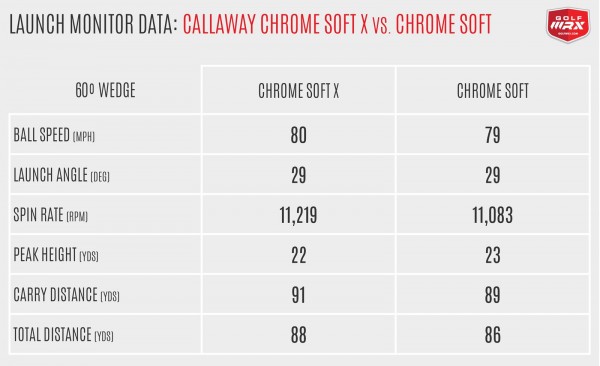 Main differences we expect to see: Not many. If anything, the Chrome Soft X might generate slightly higher ball speeds.
Main differences we expect to see: Not many. If anything, the Chrome Soft X might generate slightly higher ball speeds.
What the data actually shows: Pretty much as expected. Overall, the Chrome Soft X clocked 1 mph more ball speed, 136 rpm more spin and carried 2 yards farther. These are very subtle differences, and for an amateur like me I would not expect to notice a difference on the course.
The larger Dual SoftFast core and higher compression could account for the additional ball speed and carry distance. For me, 2 yards won’t require much of an adjustment. If you are a better player completely dialed in with your distances, you might need to make a minor adjustment.
What I saw on the course: When I’m testing golf balls, I like to drop one down without looking at the label and hit a shot. This allows me to remain unbiased in my expectation and just watch what the ball does. When I did this test with the Chrome Soft X on a full wedge shot, I was instantly impressed. The feel was incredible and the distance was spot on. After the wedge testing, I would’ve put this ball straight in the bag.
6-iron shots
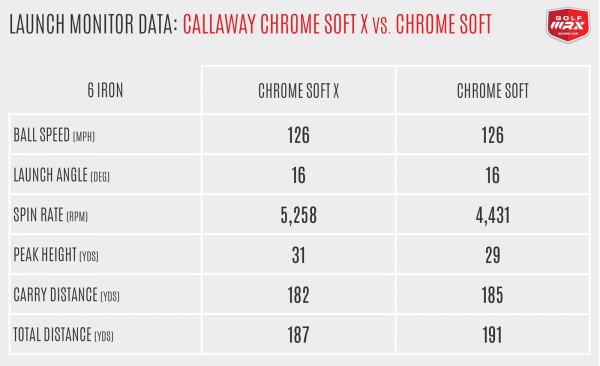 Main differences we expect to see: The Chrome Soft X should generate faster ball speeds and more spin than the Chrome Soft.
Main differences we expect to see: The Chrome Soft X should generate faster ball speeds and more spin than the Chrome Soft.
What the data actually shows: The Chrome Soft X is continuing to spin more through the bag. Ball speeds were slightly higher by about 0.8 mph. The Chrome Soft X generated a considerable amount of additional spin, but also flew slightly higher and had a steeper descent angle.
Just like you’ll see with the driver below, the additional spin decreased my distance (the Chrome Soft X averaged 3 yards less carry and 4 yards less total distance), but increased my stopping power.
What I saw on the course: Just like previous Chrome Soft balls, the feel off the club face with mid irons was very soft. I really noticed the additional spin on the course, as my draw shot shape started to get a little more curve to it and my shots stopped faster on the greens. I felt like I was able to attack greens with longer irons, flying shots all the way to the hole instead of playing a little short and letting the ball release more.
Driver shots
Main differences we expect to see: The Chrome Soft X should spin more slightly more and deliver higher ball speeds than the Chrome Soft.
What the data actually shows: I am not a high swing-speed player. My average playing swing speed is around 105 mph, which is generally considered the cut-off before you have a “high swing speed.” Also, I am not a low-spin player, so having a ball that can spin a little more might not be the best for my specific game. Based solely on that, I would not expect to see the full benefits of the Chrome Soft X
The testing backs this up. The Chrome Soft X delivered the same ball speed, but with 432 rpm more spin. Bartels says Callaway’s testing has shown golfers either spinning the Chrome Soft and Chrome Soft X the same off the tee, or an increase of 100-200 rpm with the Chrome Soft X. He called 400 rpm “within the ballpark,” but not typical.
Just to be clear, we’re talking about a change in performance that resulted in just 1 yard less carry distance and 3 yards less total distance; basically nothing.
What I saw on the course: As my launch monitor data showed, the Chrome Soft X appeared to fly higher and not roll as much when it hit the ground.
The one place I saw a benefit to the Chrome Soft X was when I contacted a drive high off the club face. With the Chrome Soft, these drives fell out of the sky more quickly, costing me carry distance. With the Chrome Soft X, they stayed in the air a little longer. It’s clear for low-spin players, or those with already optimal launch conditions, the Chrome Soft X can provide as good, if not better performance.
Around the Green
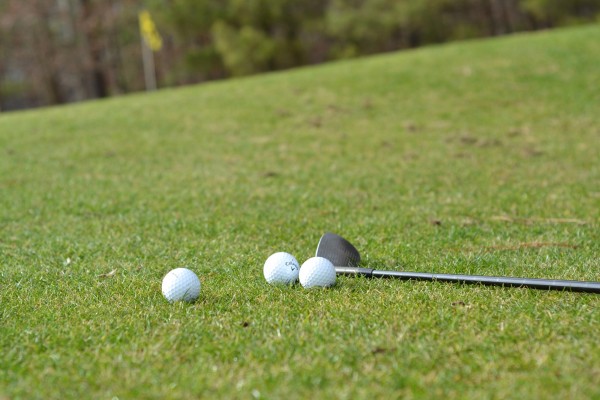 There is nothing this ball can’t do around the greens. I don’t have a tour pro’s arsenal of short game shots, but I do know the difference between a ball that can do anything and a ball that can do only some things.
There is nothing this ball can’t do around the greens. I don’t have a tour pro’s arsenal of short game shots, but I do know the difference between a ball that can do anything and a ball that can do only some things.
I put the Chrome Soft X through the paces of low spinners, high flop shots, bump and runs, and bunker shots. As expected, it performed identically to the Chrome Soft.
Putting
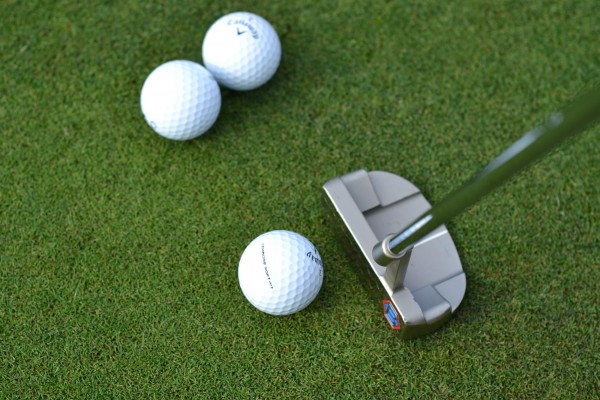 Putting one right after the other, if you are really paying attention, the Chrome Soft X feels slightly firmer off the putter face with a slightly higher-pitched sound than the Chrome Soft. But this ball is soft, smooth and rolls beautifully. I have always loved the way the Chrome Soft feels off the putter, going back to the 2015 ball. Even though it’s slightly firmer, the feel off the putter of the new Chrome Soft X continues to impress me (through the entire bag really).
Putting one right after the other, if you are really paying attention, the Chrome Soft X feels slightly firmer off the putter face with a slightly higher-pitched sound than the Chrome Soft. But this ball is soft, smooth and rolls beautifully. I have always loved the way the Chrome Soft feels off the putter, going back to the 2015 ball. Even though it’s slightly firmer, the feel off the putter of the new Chrome Soft X continues to impress me (through the entire bag really).
Feel is subjective, but I found the Chrome Soft X to be one of the softest tour balls on the market today.
Durability
I completed all my testing with only one ball, so it saw a considerable amount of shots. Like previous Chrome Soft balls, the Chrome Soft X is very durable. It took a beating with the 60-degree and showed only light scuff marks. Both the Chrome Soft X and the Chrome Soft perform very similarly in terms of durability.
The Takeaway
The Chrome Soft X isn’t for everyone and that is why Callaway is marketing the “X” as a complimentary ball to the Chrome Soft and not a replacement.
With the changes Callaway has made, the Chrome Soft X checks off all the criteria for a high-performance premium golf ball. If you thought the 2016 Chrome Soft was a little too soft with too little spin through the bag, the Callaway Chrome Soft X might just be the ball you’re looking for.
- LIKE295
- LEGIT43
- WOW14
- LOL8
- IDHT4
- FLOP8
- OB3
- SHANK25
Ball Reviews
Review: Callaway Chrome Soft golf balls
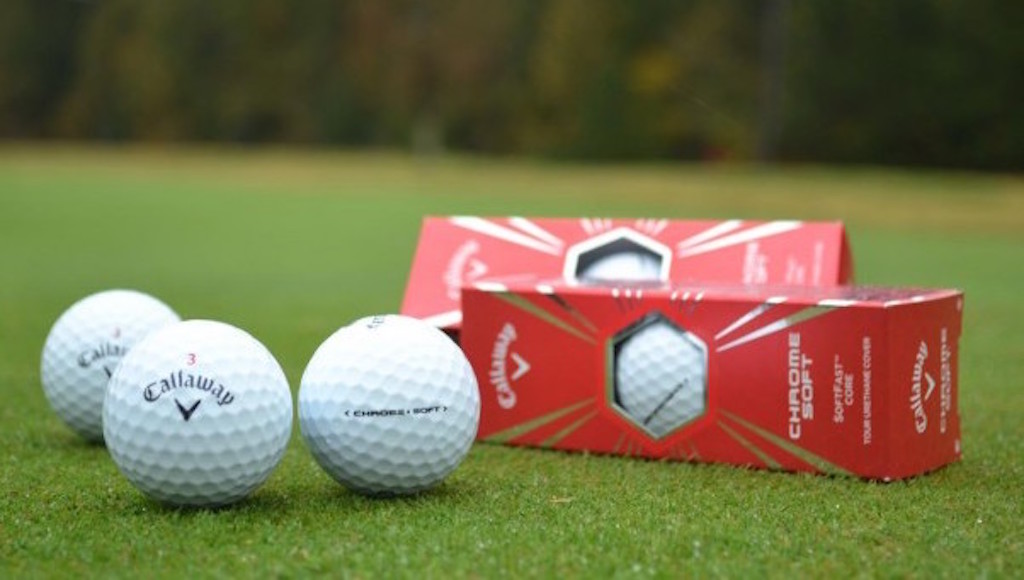
Pros: The Chrome Soft has an incredibly soft feel, but doesn’t skimp on performance. It will create maximum distance off the tee for 99 percent of golfers, yet offers short-game spin that rivals more expensive models.
Cons: Golfers with high swing speeds (105+ mph) — a.k.a. the 1 percent — may lose a few yards off the tee due to the Chrome Soft’s low-compression design.
Who They’re For: Any golfer can play the Chrome Soft.
The Review
Last year, Callaway released the Speed Regime golf ball line, which offered three different golf balls designed for different swing speeds, all with slightly different levels of compression and design. While this gave golfers the ability to really “fit” a golf ball to their game, more choices doesn’t always translate into better decision-making.
With its new Chrome Soft golf balls, Callaway has released just one ball, with one set of specifications, designed to provide a benefit to all golfers regardless of their swing speed.
The three-piece Chrome Soft, with a low-compression Soft Fast core and extremely soft DuraSpin cover, generates lower spin off the driver and long irons for more distance, while generating tour-level spin with shorter irons and shots around the green.
Let’s Talk Core
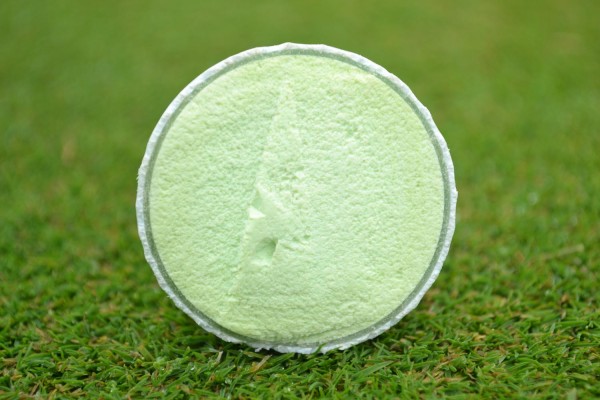 The Chrome Soft is all about the core, and since Callaway is devoting advertising space to actually talking about the compression of the golf ball, let’s dig into it a bit more.
The Chrome Soft is all about the core, and since Callaway is devoting advertising space to actually talking about the compression of the golf ball, let’s dig into it a bit more.
Thanks to a brand new SoftFast core, as Callaway calls it, the ball has a compression rating of 65. By comparison, last year’s Callaway SR-3 had a compression of around 105. Typically, the softer the core, the more the ball deforms at impact. This is great for slower swing speed players who need the ball to deform more so it can spring back into shape and generate more distance. But faster swing speed players can actually lose distance if the ball is too soft. After experimenting with 39 different prototypes, however, Callaway was able to create the right combination of the core and mantle layer so the Chrome Soft retains the energy from impact and keeps ball speed high — even at faster swing speeds.
The Chrome Soft is available now in White, Soft Yellow and Truvis Technology with an MSRP of $37.99. Custom player numbers and personalization is also available.
Performance
We put the new Chrome Soft to the test against the Callaway Speed Regime SR-3, which I tested last year.
Compared to the Speed Regime line the Chrome Soft should:
- Feel softer off every club, with slightly better durability.
- Generate less spin off the driver.
- Create more spin off shorter irons.
Like all reviews, I tested these on the range, on the course, and on a launch monitor with a 60-degree wedge, 6-iron and a driver. I headed to BridgeMill Golf Academy and worked with head pro Tom Losinger to get the data using a Trackman in his indoor studio.
60-degree full wedge shots
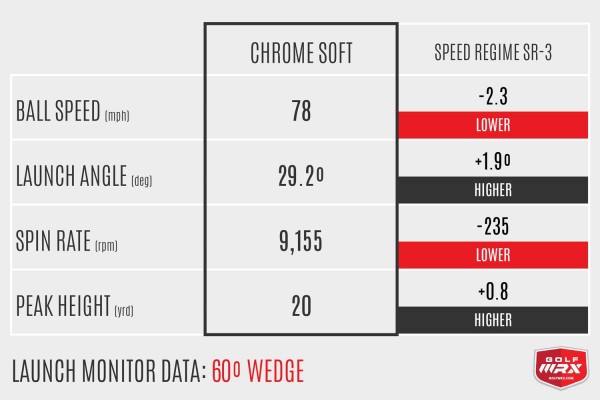
Main differences we expect to see: The Chrome Soft should generate more spin on full wedge shots.
What the data actually shows: Exactly what we expected to see. The Chrome Soft generated 200 rpm more spin than the SR-3, while launching lower and hitting a slightly lower peak height. I did, however, see a big difference in ball speed and carry distance, with the Chrome Soft flying three more yards on average.
Increased ball speed or carry distance with the shorter irons is not typically on the list of requests from better players. In this case, it’s a by-product of the new SoftFast core and three more yards of carry with a 60-degree wedge is fairly significant. That 10-foot putt for birdie is now almost 20. These types of gains will require an adjustment.
What I saw on the course: This ball was perfect inside 100 yards. If it was flying farther than other balls I’ve played, I didn’t notice. The trajectory on full wedge shots was nice and low compared to other balls, and I was already able to notice a difference in feel between the Chrome Soft and the SR-3. A difference of 200 rpm of spin wasn’t noticeable on the course, as both balls performed very similarly when they hit the green.
6-iron shots
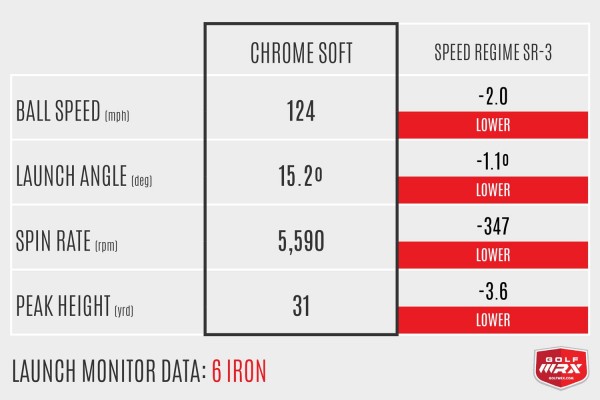
Main differences we expect to see: The Chrome Soft should generate faster ball speeds and less spin than the SR-3.
What the data actually shows: The data backed up the expectations when it came to ball speed. However, I actually saw more spin on my 6-iron compared to the SR-3 and even other tour balls. This could be due to a variety of factors concerning my individual swing, and other golfers might see less spin off their mid irons. Compared to the SR-3, the Chrome Soft launched a little higher, with more spin and ball speed, allowing it to carry a little more than one yard farther. It also hit a higher peak height with a steeper descent angle.
What I saw on the course: I was probably most impressed with the Chrome Soft with the mid to long irons. Yes, the ball performed great off the driver, but the softer feel was very apparent with an iron in my hands. Launching shots with mid to long irons had a more effortless feel. I was also able to get some nice height and spin on my longer irons without sacrificing distance, so I could land shots on the green and see them stick, instead of hitting and running off the back.
Driver shots
Main differences we expect to see: The Chrome Soft should spin less, but still generate more ball speed than the SR-3.
What the data actually shows: I’m a borderline high-speed guy with the driver. My average swing speed is around 106 mph — right on the borderline where golfers can start to “over-compress” the Chrome and possibly lose distance.
You may have read editor Zak Kozuchowski’s reviews on GolfWRX, who can generate more than 115 mph of swing speed with his driver. In his on-course testing, he said he hit the Chrome Soft about the same distance as other tour balls.
“If they liked everything else about the ball, I can’t imagine a golfer who swings 105+ mph wouldn’t play the Chrome Soft just because it was a few yards shorter than a higher-compression tour ball off the tee,” he said. “If a soft feel is important to them, that’s going to take precedence over a few yards of extra distance. And they’ll get those few yards back with their long irons, anyways.”
In my testing, the Chrome Soft generated slightly faster ball speeds, and a lot less spin — almost 300 rpm less spin than the SR-3. This translated into an extra 1.5 yards of carry, and more than 5 extra yards of total distance.
What I saw on the course: The distance gains and lower spin appeared to translate to the course. I wasn’t having any issues getting the ball to run out once it hit the fairway. And the distance appeared to be spot on, if not slightly longer.
Around the green
It is always fun to have that moment in a round where you hit the low, checking chip that freaks out your playing partners. I had that moment from about 55 yards away to a back pin, with out of bounds directly behind the green. With a 56-degree wedge, I hit the low shot and right before the ball hit the green, my playing partners were yelling “get down!” But I knew I hit it well and the ball bounced, checked, and then just lipped the cup.
Could I have executed that shot with other tour balls? Yes. But, it is important to know I can execute it with the Chrome Soft. I’m not a short-game wizard like one of Callaway’s more well-known tour pros, but these balls allow me to hit any kind of shot around the green without hesitation.
Putting
The Chrome Soft feels much softer than the SR-3, which was noticeably softer than previous generation Callaway tour balls. The sound profile has a lower, less “clicky” sound that translates into improved feel. The engineers really have brought the incredible feel of the SuperSoft to the tour-level Chrome Soft.
I’ve rolled some beautifully smooth putts with these balls. They are predictable and roll true when you strike them well. While I won’t go so far as to say they are the best feeling golf ball on the market (although they are close), they are the best feeling Callaway golf ball I’ve tested.
Durability
When most people hear “softer cover,” they instantly assume it will be less durable — and for good reason. It is counter intuitive to believe that soft equals durable. I’m not going to pretend to know the science behind it, but the DuraSpin cover is made from Thermoplastic Urethane, which actually becomes more durable the softer it gets.
I’ve played numerous rounds with the same ball, and also completed all the testing with only three Chrome Soft golf balls, so I can back up Callaway’s claims. These balls are definitely durable and can last numerous rounds if you don’t lose them. With fresh wedge grooves, I was getting all the spin benefits and little to no scuffing. I did see some minor scuffs after finding some rocky rough off the tee, but the ball was still playable and I shouldn’t have been over there in the first place!
The Takeaway
If you’ve avoided Callaway balls in the past because of the “clicky” stigma that has followed them around, it might be time to try a sleeve of the Chrome Soft. Many golfers, myself included, really love the feel of the Callaway SuperSoft, but not the overall performance. The Chrome Soft is a marriage of the soft feel of the SuperSoft with the tour-level performance of the Callaway SR-3. With low spin off the driver and the most spin on short irons of the tour balls I’ve tested this year, the Chrome Soft is one of the best golf balls on the market today.
We gave the Chrome Soft 5 stars, but one of our editors made the case that on a scale of 1-10, the Chrome Soft is an “11.” If you’ve seen the movie Spinal Tap, you know what he means.
See what GolfWRX Members had to say about the Chrome Soft in our Official Forum Testing Thread.
[wrx_retail_links productid=”12″]
- LIKE267
- LEGIT34
- WOW18
- LOL3
- IDHT5
- FLOP1
- OB2
- SHANK24
-

 Product Reviews2 weeks ago
Product Reviews2 weeks agoFujikura 2024 Ventus Blue with VeloCore Plus review: Club Junkie Reviews
-

 19th Hole1 week ago
19th Hole1 week agoCharley Hull reveals how a fan slipped her his phone number and asked her on a date during Women’s U.S. Open
-
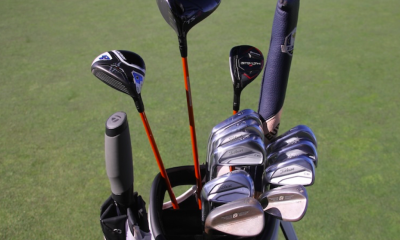
 Whats in the Bag1 week ago
Whats in the Bag1 week agoRobert MacIntyre’s winning WITB: 2024 RBC Canadian Open
-

 Equipment5 days ago
Equipment5 days agoDetails on Justin Thomas’ gas station putter pickup
-

 Equipment4 days ago
Equipment4 days agoPros weigh in on Titleist’s new GT drivers at the Memorial
-

 19th Hole2 weeks ago
19th Hole2 weeks agoLexi Thompson announces retirement from golf
-

 Tour Photo Galleries1 week ago
Tour Photo Galleries1 week agoPhotos from the 2024 Memorial Tournament
-

 19th Hole1 week ago
19th Hole1 week ago‘Talk about p****d off’ – Ian Poulter fumes at airline after receiving nightmare email mid-flight

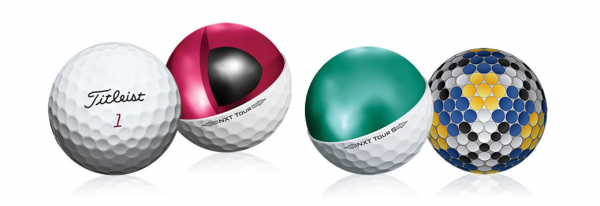

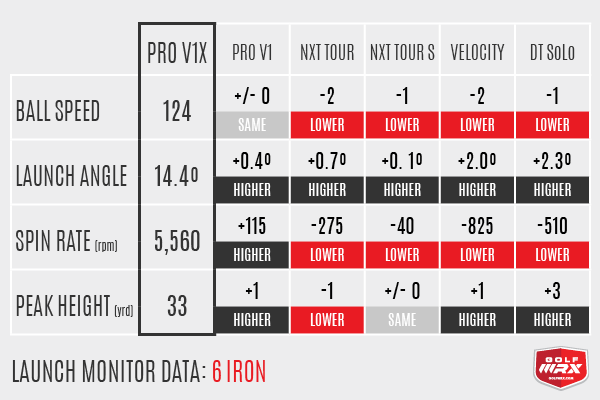
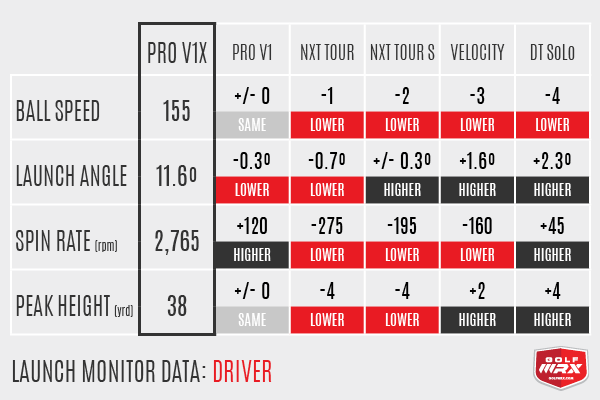
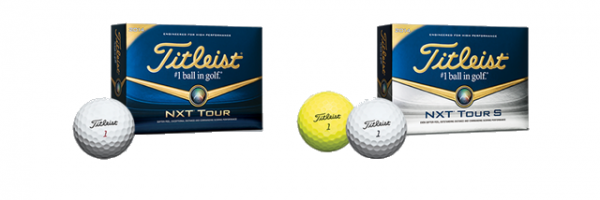
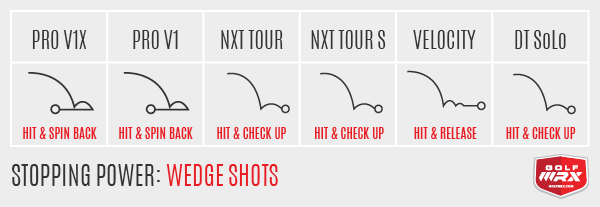
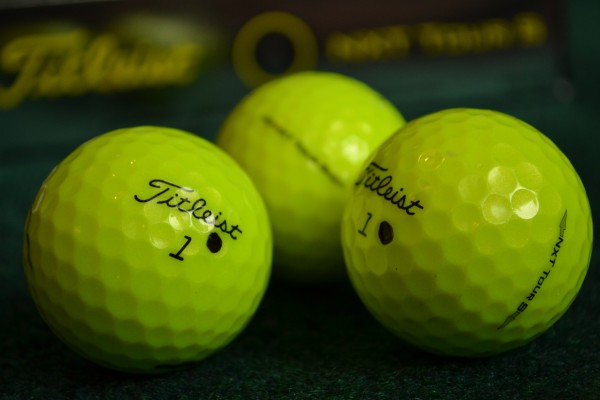
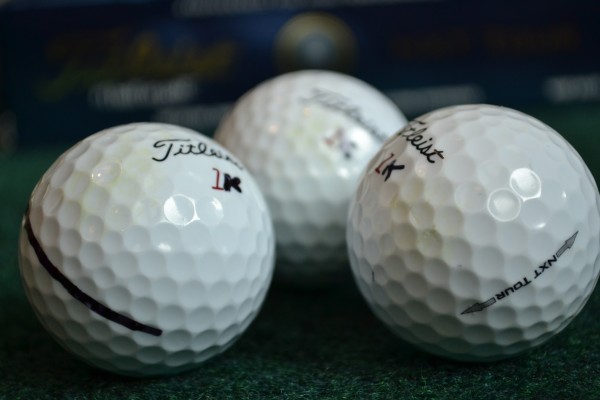


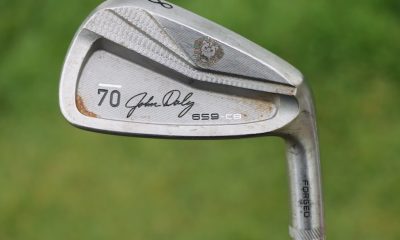

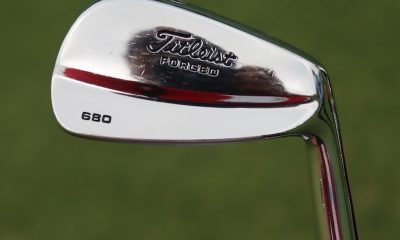

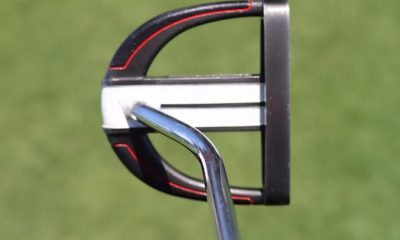

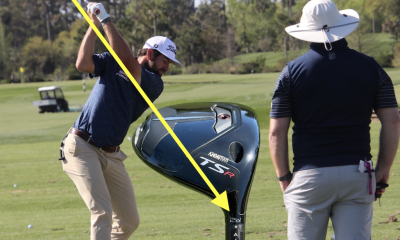

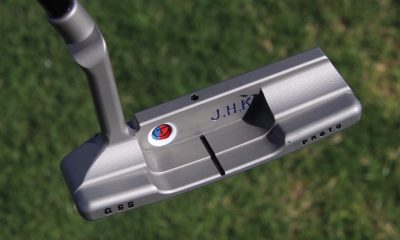





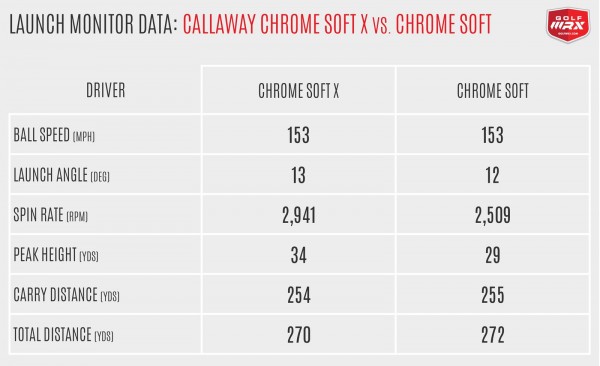
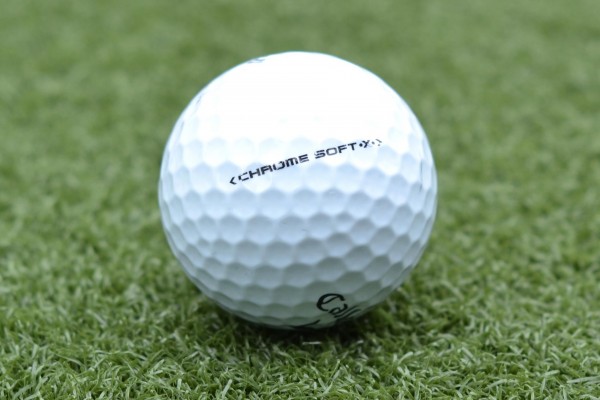
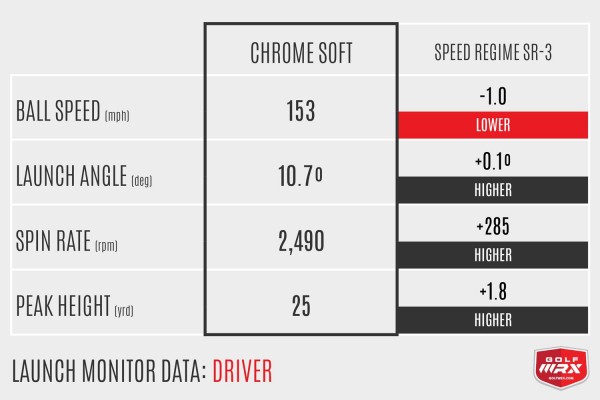
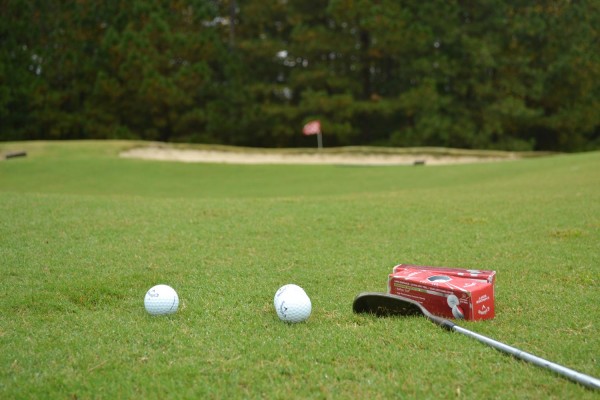
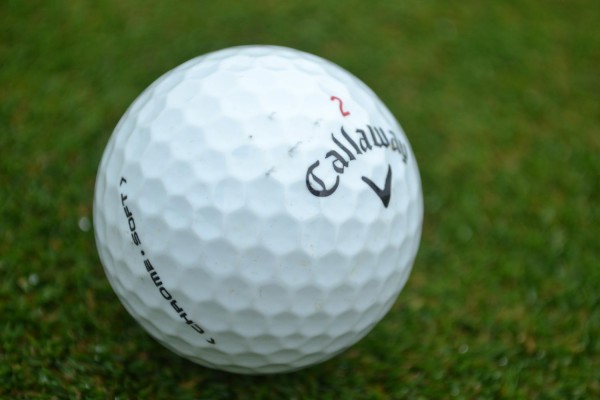














Joe Carrow
Jul 23, 2017 at 7:42 pm
Tour S Is my favorite from its beginning.
Charlie
Jun 30, 2017 at 1:42 am
Is there an updated version of the NXT?
William Starman
Mar 3, 2017 at 1:34 pm
This is a great review of the Titleist NXT tour line of golf balls. Great metrics and testing. Very well done!
Viper
Apr 1, 2015 at 11:44 am
Which NXT Tour are the newest and current, I see a few different box? There is a 2014 on the box , NEW and the other box don’t?
Ben
Sep 30, 2014 at 8:51 am
I don’t understand how the NXT is marked as “Hit and Checkup” around the greens while the ProV1 will spin back if their spin rate only differ by 25rpm’s? Can you explain?
Doc Todd
Sep 2, 2014 at 9:59 pm
Kane, thank you for doing the homework and giving us this data. I have long waivered back and forth between the NXT Tour and PV1x, even as a 4 hcp. I don’t usually try to spin the ball back and prefer to hit shots that bounce and check to a stop with my mid-low irons. Even with those positives, the NXT tour cannot compare to the PV1x in feel and that keeps sucking me back to spending the extra $$$. I do wish more of us had the time, opportunity, and equipment to do these tests ourselves and have more objective data to help choose the right golf ball for our game.
killerbgolfer
May 5, 2014 at 11:34 am
Great review. The spin comparisons on the 60*/6i/Driver were very helpful in trying to pick which ball i want for my game. Great work.
Bryan
May 4, 2014 at 10:59 pm
These are great reviews. I can’t wait to see the reviews comparing amongst the different brands of balls. This is the first review of any ball that I have seen that uses trackman data and other scientific data. I play the ProV1x and I would love to see how it compares to the Bridgestone or Nike balls.
Kane Cochran
May 5, 2014 at 8:03 am
Thanks, Bryan, great to hear you like the format. We’re working on more ball reviews in the coming months. Good chance you’ll see them in future Gear Trials feature similar to the Driver story recently posted.
Terry
May 3, 2014 at 9:49 pm
I bought a sleeve of the NXT Tour recently, I play prov1x mostly and was similar but feel and look was off…. Similar flight, but putting is where I noticed the biggest difference in feel
Tyler
May 3, 2014 at 5:28 pm
Once again excellent article. Thank you. I couldn’t agree more with the NXT Tour review. I’ve found that the NXT Tour seems to help to compensate for my equipment not being exactly dialed in. I probably generate too much spin with the driver and could use a slighter stiffer shaft especially as my swing gets better with time and practice, but I don’t have the time and money to dial in my equipment every 3 months. The NXT Tour keeps the spin rates and the ball flying straighter down but still allows great spin when you need it. I couldn’t agree more about the feel off the putter. It feels better than most tour balls I’ve tried excluding the Pro v1x (nothing beats that one). Awesome ball!
Kane Cochran
May 5, 2014 at 8:00 am
Thank you, Tyler, happy to hear it. Great feedback on your experience with the NXT Tour, always great to hear about other members’ experiences with the tech we test, play and review. Thanks for sharing.
Chuck
May 3, 2014 at 3:16 pm
Can anyone tell me in plain English why all of the Urethane “tour” balls cost twice as much as Surlyn (and other polymer blend) balls?
Is it really just the cost of materials? Or is it a complicated pricing strategy based on what the market will bear?
TT
May 3, 2014 at 7:14 pm
I would guess it is a supply (higher cost) and demand issue. As a somewhat skilled player, I started playing urethane balls this season and there is no question that they perform better from <100yds for me. Lots of spin/control for me. I am certainly willing to pay more for the urethane balls.
Patrick
May 3, 2014 at 9:09 am
According to the May issue of Golf, the Tour compares to the Pro V1x and the S compares to the Pro V1
Dan
May 2, 2014 at 6:55 pm
Great article. I would love for more reviews hopefully on the nike lineup. Maybe compare titleist to nike?
Kane Cochran
May 2, 2014 at 7:15 pm
Thank you, Dan. We’re working on producing more stories that compare products from different manufacturers head-to-head and we’re also going to have more ball reviews from different manufacturers in the coming months.
Justin
May 2, 2014 at 6:15 pm
So anyone know for sure??? Is S like x??
froneputt
May 2, 2014 at 5:00 pm
I think your pom-pons are showing. Your enthusiasm shows through in your writing. But these balls do not have urethane covers, and they won’t give tour level performance on partials around the green. I had the prototype NXT Tour ball. It’s a good ball, but it’s not a tour level ball.
west
May 2, 2014 at 7:14 pm
Dido!
Ben
May 2, 2014 at 4:10 pm
It is a really good write up of the ball. They are a lot like the Bridgestone E-5 with a urethane cover for feel in short game but lower spin for long game. The trackman numbers are good for reference but results cannot be applied to every golfer. Gotta just try it.
Kane Cochran
May 2, 2014 at 4:12 pm
Thanks, Ben. And you’re completely right, this article is based on the results with my swing and while they can be a reference, you won’t know what works for you until you hit them yourself.
froneputt
May 2, 2014 at 8:04 pm
They feel better than the e5, which in at least its 2012 version, was a hard rock.
Curtis
May 2, 2014 at 3:25 pm
Very interesting article. Definitely will make me think of trying the NXT Tour next time. Little better on the bank account as well!
Jim
May 2, 2014 at 3:17 pm
Great review and description of the balls’ data too. However I’m confused as to why anyone would buy these balls when you can have essentially the same ball from Callaway (Chrome series) or TM (A project) but with a urethane cover. The cover really seems to make a difference, maybe only slightly though, and they are typically $2-3 less per dozen too. With the price of golf balls these days that makes a difference too. Not sure why Titleist doesn’t use urethane covers? Still overall they sound pretty good, just not for me.
Justin
May 2, 2014 at 2:59 pm
So is the “S” closer to the ProV1 or the x?
Curtis
May 2, 2014 at 3:27 pm
ProV1x I believe.
Mike
May 3, 2014 at 7:51 am
The “s” is closer to the ProV1 according to the Titleist ball fitting app and the NXT Tour is closer to the ProV1X.